Genre: Racing Developer: Sega Ent. Publisher: Sega Ent. Players: 1 Released: 1987
Imagine yourself (back) in 1987. The Master System, successor to the Japan-only SG-1000 and Sega’s response to Nintendo’s sales behemoth NES, is in its infancy. The idea was to create an 8-bit video games console more powerful than Nintendo’s own, and to bring Sega’s arcade heritage to the home.
OutRun was a move in this direction, and certainly one of the most successful. The Master System port manages to overcome the limitations of its hardware to deliver a breathtaking experience that almost perfectly captures the essence of the original. At the time, it may have been difficult to go to the home port after experiencing the arcade version, but now, almost thirty years on and with both games having been technically surpassed by countless modern racers, it’s actually easier to appreciate the port for what it achieved at the time and what it remains today.
At a glance, OutRun is deceptively simple. Described by lead designer Yu Suzuki as a “driving game” with no other opponents, racing elements are very much present in the form of reaching the next checkpoint before the timer hits zero. It’s not just the twists and turns of the course that present a challenge, but also other drivers on the road. The cars and lorries may not be racing with you, but they all become additional obstacles to overcome.
What really adds to the complexity of the game is the two-level gear system. Although, again, only two gears may appear simplistic, it’s enough to force players to make split-second decisions when it comes to navigating a tight S-bend in the road or driving between two fast-moving vehicles. Experienced players may be able to get through most of the game in high gear at top speed, with occasional breaking, but for many, knowing when to switch gears and for how long is what will determine whether they’ll make it to the end of the course, or if their car will slam into a billboard by the side of the track.
It all works excellently on the Master System. Those going to it straight from the arcade or Mega Drive/Genesis port may find it disorienting – there’s no doubt that the 8-bit conversion is the weakest of the three – but even so, it’s a confident, competent and faithful recreation of one of Sega’s greatest arcade classics. Such was not always the case on the Master System, with many games being butchered beyond recognition from their arcade counterpart, but here the pieces slot neatly into place. It’s down-scaled, but the tweaks work in harmony.
The visuals of the original have been masterfully replicated here. Clear effort has gone into providing the same picturesque settings seen in the arcade, and like the arcade, there’s a terrific amount of variety, from the iconic beach track, to rolling green fields, to a night time stage, beautifully rendered in 8-bit. Excellent scaling avoids the glaring visual problems present in one of Sega’s other arcade-to-8-bit ports, Space Harrier, and despite the lower density of scenic objects, there’s enough detail in both foreground and background to create the sense of depth, an actual world beyond the track.
Sound-wise, OutRun has the potential to be terrific or disappointing, depending on your set-up. Essentially, PSG is what you’re after. European copies of the game, running on both original hardware and Mega Drive backwards compatibility, have pitch-perfect 8-bit renditions of the arcade’s three original tracks. “Magical Sound Shower” and “Splash Wave” sound as good here as they do anywhere else, and contribute a great deal to the game‘s “just one more go” appeal. On emulator with FM, however, music sounds deeper and muddier, coupled with irritatingly squeaky tire skid effects, which altogether sounds quite ugly. In short, make sure you’re playing with PSG.
Across all Master System versions, there’s also a slight choppiness, noticeable not so much in the visuals as in the responsiveness of the car. This can make navigating some of the courses’ tighter turns more difficult than on other systems, and going too slow around corners or uphill can prove disastrous for your run. For the most part though, it plays great, retaining a gloriously satisfying sense of speed. Production values as we know them today didn’t really exist in the industry three decades ago, but even so, an almost tangible care has gone into this game. Despite its technical downscaling, it oozes quality, and it wants you to enjoy the ride.
What remains to be said, about all versions of OutRun, is that like Sega Rally, Daytona and many other of Sega’s racers, it manages to raise and sustain a personality that goes a long way to providing its lasting appeal. Without a single word of story, it feels like a complete package, not only as a game but an experience, the race through idyllic scenes somehow being both frantic and relaxing. It’s this vision and this atmosphere, as opposed to raw gameplay alone, that makes the game such an enduring classic, and a staple of Sega’s heritage. Fun and challenging, it’s a prime demonstration of the kind of worlds that could be built in both the arcade and at home.
1987 was before my time, but it’s hard to imagine anything quite like OutRun on home consoles back then. The pseudo-3D graphics, the brilliant (PSG) renditions of the original’s music, the sheer sense of speed is all here, and today it remains a great example of what the Master System was capable of. It proves that the console had the horsepower behind it, and it still holds up in the present day. The Mega Drive/Genesis port may well be the superior version, but at the time it was still four years from release – a generation away. Sega’s vision to deliver the arcade experience at home began with the 8-bit version of OutRun. It deserves to be remembered as the daring first step in that direction.
Score: 8 out of 10

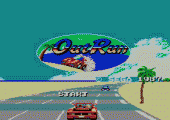
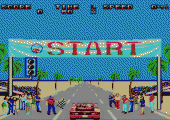
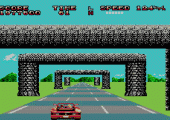
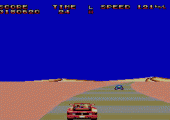
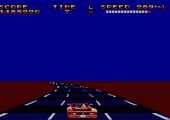
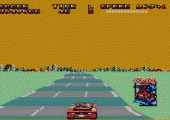
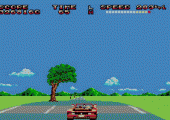
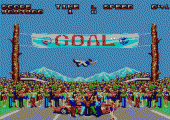
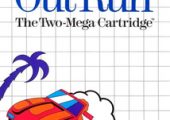
Recent Comments